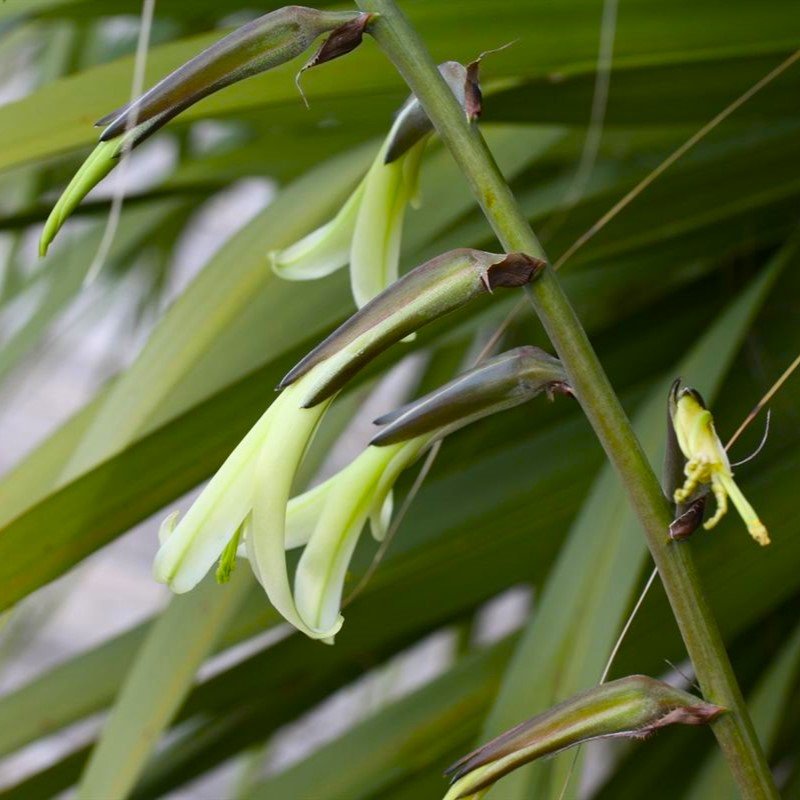

Queen's Tears
Billbergia nutans
Billbergia nutans, commonly known as the Queen's Tears, is an epiphytic bromeliad native to Brazil, Paraguay, Uruguay, and Argentina. The plant was first described by Swedish botanist Gustav Johan Billberg in 1816 and has since become a popular ornamental plant. The plant typically grows to a height of one to two feet and has a rosette of arching, strap-like leaves that are gray-green in color. In the center of the rosette, the plant produces a tall, slender, hot-pink spike that bears numerous small, tubular flowers.
Queen’s Tears prefers a bright, indirect light and well-draining soil that is moist but not waterlogged. The plant is also tolerant of drought conditions and can go several weeks without water. Queen’s Tears slowly spreads by offsets and can be grown in containers or mounted on a piece of wood or other material. The plant benefits from occasional fertilizing.
Overall, Billbergia nutans is a beautiful and low-maintenance plant that is well-suited to indoor or outdoor conditions. Its distinctive flowers and attractive foliage make it a popular choice for adding color and texture to a variety of garden settings.
Cold hardy to USDA zone 8b or to 15 degrees Fahrenheit.
For sale are 1 gallon potted plants
Billbergia nutans
Billbergia nutans, commonly known as the Queen's Tears, is an epiphytic bromeliad native to Brazil, Paraguay, Uruguay, and Argentina. The plant was first described by Swedish botanist Gustav Johan Billberg in 1816 and has since become a popular ornamental plant. The plant typically grows to a height of one to two feet and has a rosette of arching, strap-like leaves that are gray-green in color. In the center of the rosette, the plant produces a tall, slender, hot-pink spike that bears numerous small, tubular flowers.
Queen’s Tears prefers a bright, indirect light and well-draining soil that is moist but not waterlogged. The plant is also tolerant of drought conditions and can go several weeks without water. Queen’s Tears slowly spreads by offsets and can be grown in containers or mounted on a piece of wood or other material. The plant benefits from occasional fertilizing.
Overall, Billbergia nutans is a beautiful and low-maintenance plant that is well-suited to indoor or outdoor conditions. Its distinctive flowers and attractive foliage make it a popular choice for adding color and texture to a variety of garden settings.
Cold hardy to USDA zone 8b or to 15 degrees Fahrenheit.
For sale are 1 gallon potted plants















